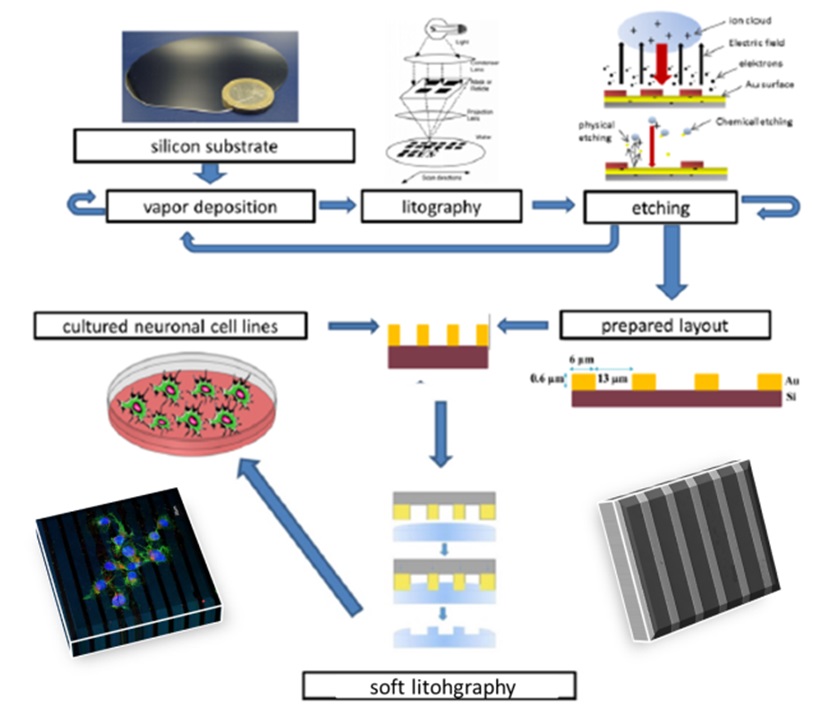
Supervisory institution:
National Science Centre
Project manager:
M.Sc. Jagoda Litowczenko
Budget:
149 988,00 PLN
The aim of the project is to design and examine the silicon-gold matrices and carbon-polymer composites properties with specific surface morphology (micro/nanopatterns) for their biomedical applications. Research hypothesis assumes that the obtained composites are optimal biocompatible scaffolds for culture and direct growth of neural cell lines and Human Neural Stem Cells (hNSCs).

The motivation for undertaking the research is constant necessity of searching for cheap and biocompatible materials which can solve some issues concerning regenerative medicine. One of the specific challenges of tissue engineering is to obtain suitable scaffolds for the nervous system regeneration. Traumatic insults of central nervous system such as traumatic brain injury and spinal cord injury often effect the sensory and motor function disorders. Furthermore, the consequence of many neurodegenerative complaints such as Parkinson’s, Alzheimer’s and Huntington’s disease is neuronal declining. Central nervous system has very limited capacity to regeneration in contrast peripheral nervous system can regenerate. In case of the nervous system regeneration, scaffolds should exhibit biocompatibility, immune inertness, relevant mechanical properties and surface topography. The advantage is conductivity of the carbon-polymer biomaterials. Particularly interesting seems to be connection of carbon nanomaterials (GR and CNT) with polymeric materials. These materials have high electrical potential which can be used in the regeneration of nervous system and have a high scientific potential.
For composites fabrication biocompatible polymers such as collagen which naturally occurs in the body, biodegradable PCL, non-biodegradable PDMS and having conductive properties polypyrole are selected. Two types of carbon nanomaterials are chosen i.e. carbon nanotubes (CNT) and graphene (GR). It is expected, that production of nanopatterns on obtained composites surfaces can improve the cell adhesion and stimulate them for targeted growth. Research tasks will be performed entirely at NanoBioMedical Centre Adam Mickiewicz University in Poznan. All matrices will be characterized by means of scanning electron microscopy (SEM) and atomic force microscopy (AFM). In investigation stem cells (Neural Stem Cells) for growth, arrangement and cell adhesion studies will be used. The obtained results may help to answer the question: which carbon-polymer composites as well as micro/nanogrooves sizes (micro/nanopattern) are the most optimal for orienting, controlled growth, adhesion and differentiation of neuronal cells.

SEM micrographs of neuronal cells cultured on silicon-gold interfaces

AFM images of neuronal cells cultured on silicon-gold interfaces


